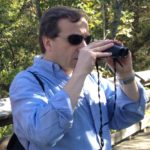 Usually I do a Travel Preview post in early January. I skipped the preview in January 2018 because I suspected my “travel year” would shift…and it did. Thus, this travel preview covers 2018-2019, roughly mid-year to mid-year.
Usually I do a Travel Preview post in early January. I skipped the preview in January 2018 because I suspected my “travel year” would shift…and it did. Thus, this travel preview covers 2018-2019, roughly mid-year to mid-year.
That’s not to say that I’ve been homebound. In January we flew down to Ft. Myers, FL for a long weekend touring Sanibel Island, checking out Thomas Edison’s winter retreat, and notching my 49th aquarium at the Mote Marine Lab in Sarasota (my 50th came last month in Copenhagen). February was spent doing local trips, mostly Abraham Lincoln oriented. March I drove down to Newport News for the annual “Battle of Hampton Roads” weekend. April I made an unplanned trip to Massachusetts when my Dad went into the hospital, as well as a quick drive to Fredericksburg for a CPRC conference. In May I did Part 1 of my “Chasing Abraham Lincoln” tour through Tennessee, Kentucky, Indiana, and Michigan. And then there were scads of local Lincoln Group of DC-related events, including a Lincoln-Douglas-Douglass debate at the National Archives (check the link for this once-in-a-lifetime event).
But now the fun begins. In early July Ru took a year off from her job with the goal of exploring more of the world. We began by flying to Copenhagen in late June and spent two weeks cruising around the Baltic Sea on a relatively intimate yacht of only 200 passengers, many of whom we came to know quite well. Stops included the Danish island of Bornholm, the Polish city of Gdansk (where the end of communist USSR began), the Curonian peninsula of Lithuania, the gorgeous old Estonian city of Tallinn, and then spent two days (ironically, the 4th of July) in St. Petersburg, Russia. From there we stopped in Finland’s capital Helsinki (where I had been several times when I lived in Brussels) and the oddly confusing but beautiful Finnish/Swedish Mariehamn in the Aland Islands (technically they belong to Finland, but speak Swedish, and have an autonomous government; you figure it out). The end in Stockholm was bitter-sweet.
Two days back from that trip, Ru flew to Beijing for a month, with side trips to Shanghai and Hong Kong. Meanwhile, I did Part 2 of my Chasing Abraham Lincoln tour, this time a 2905+ mile drive to, from, and around Illinois. My three main goals were to see: 1) the seven Lincoln-Douglas debate sites (plus a live debate between Lincoln [George Buss] and Douglas [Tim Connors]); 2) Rock Island, where a famous Lincoln court case involving a steamboat and a railroad bridge took place; and 3) the Illinois and Michigan Canal area, a key internal improvement project promoted by Lincoln. All these are research for my forthcoming book. Along the way I stopped in tons of tiny towns boasting some connection to Lincoln, all with the requisite Lincoln statue.
Next up is a road trip to Massachusetts and Maine to visit family in August, a September road trip from Crater Lake in Oregon to Glacier National Park in Montana, a trip to Gettysburg for the annual Lincoln Forum meeting followed by another road trip to Massachusetts for Thanksgiving. We’ll likely squeeze in some shorter trips to New York City, Chicago, Charleston (SC), Richmond, and other locations that don’t take too much planning.
Immediately after Thanksgiving we’ll fly to Hong Kong to board the sister of our Baltic yacht, which will take us around several Philippine islands, then to the two parts of Malaysia on Borneo, a day in Brunei, then end in Singapore. Since we’ve now both been to Hong Kong (separately), we’ll focus a few days of extra time on Singapore and probably a trip up to Kuala Lumpur. Who knows, maybe we’ll get to Indonesia while we’re there.
Into 2019 the plans are still fuzzy, but in the works are possible trips to Antarctica, Galapagos Islands, Rio, Machu Picchu, Costa Rica, and more. One relatively sure thing is a month in Paris – the plan is to rent an apartment in the spring so I can do research on a yet another book in the works, with side trips to Brussels, Lyon, Lille, and perhaps other European locales. A friend just mentioned that her family is going to Iceland next month, and since Iceland is on my “must-see” list, it’s a good bet we’ll try to get there in 2019. We also had to pass on a September trip to Petra, so I’m hopeful we can squeeze that visit in within the next year or two along with Egypt, Israel, and environs. And then there is the long-awaited African safari we’ll try to coordinate with my brother and his wife.
I’ve been to over 50 countries (depending on how you count), but there are still so many places I want to see. So many cultures, so little time (and money).
Of course, I’m also working on several books and I’ve yet to figure out how to write productively while traveling. I did have a productive writing and editing day on the Baltic trip during our one day at sea (i.e., not in a port). The December trip is longer and includes four individual days at sea, so there is some hope. But I’m going to have to be more efficient with my writing time (including the time used to write this preview).
Which is what I’ll do right now, as soon as the washer repairman finishes diagnosing my temperamental machine. At least I got this post written while he worked.
Go to the main blog and scroll up and down to see posts on the Baltic, Chasing Abraham Lincoln, and other trips as they happen (or happened). Or keyword search at the top of the page for specific locations and evens. You should also go to Ru’s blog to see how she is documenting her year of discovery.
David J. Kent is an avid science traveler and the author of Lincoln: The Man Who Saved America, in Barnes and Noble stores now. His previous books include Tesla: The Wizard of Electricity (2013) and Edison: The Inventor of the Modern World (2016) and two e-books: Nikola Tesla: Renewable Energy Ahead of Its Time and Abraham Lincoln and Nikola Tesla: Connected by Fate.
Check out my Goodreads author page. While you’re at it, “Like” my Facebook author page for more updates!
Like this:
Like Loading...





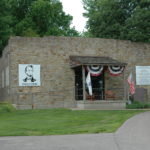

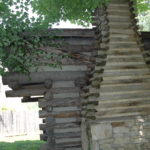
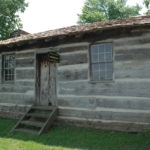
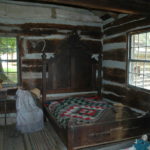
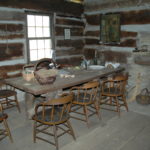







 Usually I do a Travel Preview post in early January. I skipped the preview in January 2018 because I suspected my “travel year” would shift…and it did. Thus, t
Usually I do a Travel Preview post in early January. I skipped the preview in January 2018 because I suspected my “travel year” would shift…and it did. Thus, t









 Now that I’ve recovered (not) from my recent overseas trip, I’m off on the second part of my Chasing Abraham Lincoln road trip. This part takes me into Illinois, the Land of Lincoln. For stories and photos from Part 1, click on
Now that I’ve recovered (not) from my recent overseas trip, I’m off on the second part of my Chasing Abraham Lincoln road trip. This part takes me into Illinois, the Land of Lincoln. For stories and photos from Part 1, click on  I’ve been to Copenhagen before (see my “
I’ve been to Copenhagen before (see my “












































 Like the Lincolns, my Chasing Abraham Lincoln tour (Part 1) takes me next into Indiana and the farm where Lincoln spent the next 11 of his most formative years. Alas, it’s also where he lost both his mother and his sister to eternity. Stay tuned.
Like the Lincolns, my Chasing Abraham Lincoln tour (Part 1) takes me next into Indiana and the farm where Lincoln spent the next 11 of his most formative years. Alas, it’s also where he lost both his mother and his sister to eternity. Stay tuned.






